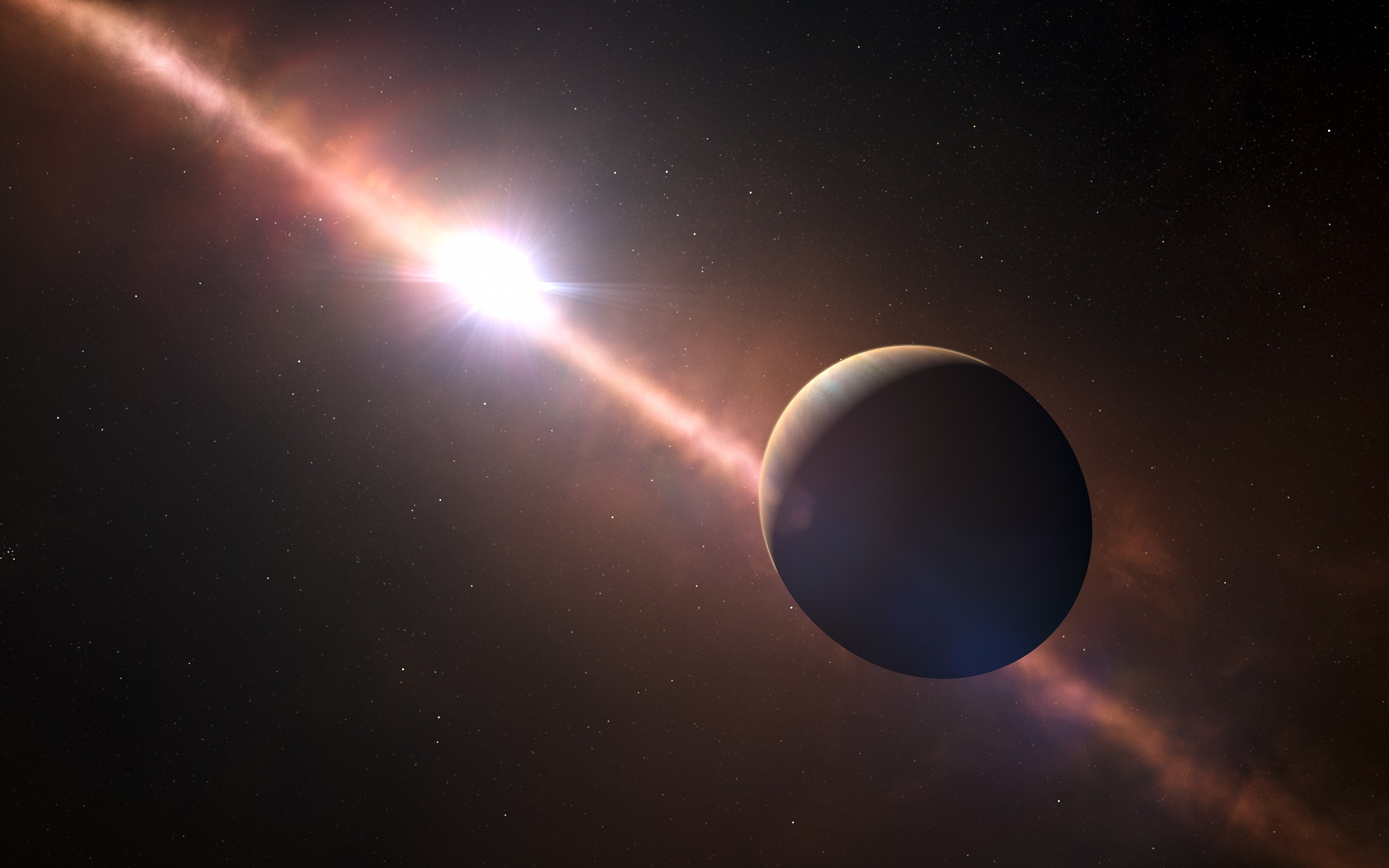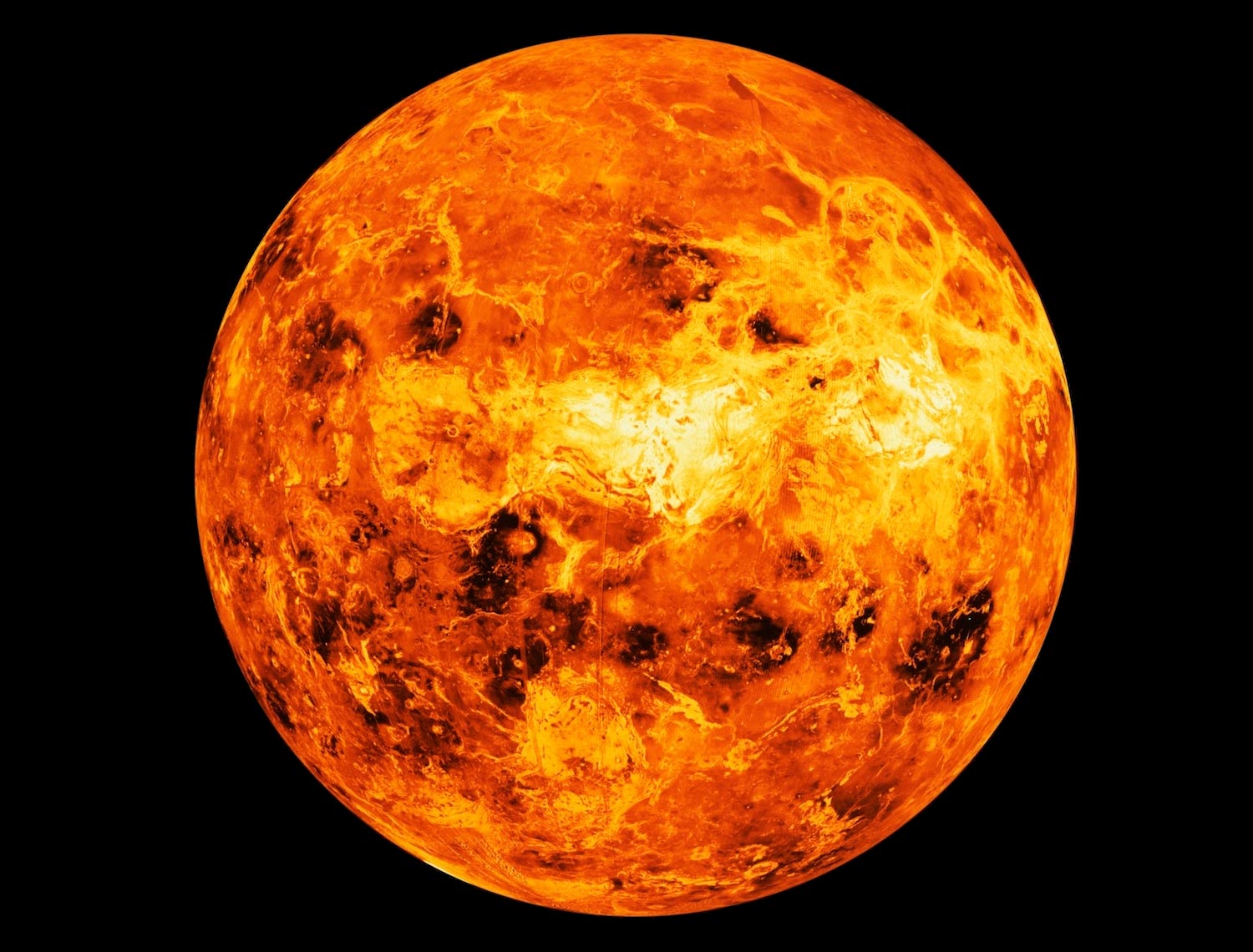
A direct image of a multi-planet system around a Sun-like star. The planets, TYC 8998-760-1 b and c, are visible middle and lower right. Image credit: ESO/Bohn et al.
* * *
The discovery: This hot, very large planet is the second to be directly imaged – that is, pixels of light captured by telescope from the planet itself – as it orbits a Sun-like star some 300 light-years away. An international team of scientists published its discovery of the star's first directly imaged companion in February 2020.
Many things are taking place:
Study illuminates fates of distant planetary atmospheres

Published July 21 in the Proceedings of the National Academy of Sciences , the results deepen our understanding of how planetary atmospheres form and grow, and can help astronomers narrow down the best places to search for planets with Earth-like atmospheres.
"The habitable zone for planets is on a line—a cosmic shoreline between too much and too little atmosphere," said Asst. Prof. Edwin Kite, first author of the study and an expert on the history of Mars and the climates of other worlds. "Are there lots of planets sitting along that shoreline, or are they rare? This is a big question in planetary science right now."
The China Mars mission raises the question of how best to settle other planets

The Martian Revolution — pitting the human inhabitants of Mars against the Earthlings who stayed at home — is coming. The only question is which side of it we should be on now, a century or two before it begins.
In building new outposts of human society, how do we keep from repeating all the injustices and broken power dynamics that have marked history on Earth?
While billionaire rocketeers like Elon Musk , Jeff Bezos and others aren't directly involved in these missions, they are very interested in Mars. And nation-sponsored endeavors like those launching this week will plant the seeds that they hope will eventually grow into a long-term, large-scale human presence on Mars and throughout the solar system.
Astronomers are Starting to Find Planets in Much Longer Orbits.

We’re getting better and better at detecting exoplanets. Using the transit method of detection, the Kepler Space Telescope examined over 530,000 stars and discovered over 2,600 explanets in nine years. TESS, the successor to Kepler, is still active, and has so far identified over 1800 candidate exoplanets, with 46 confirmed.
But what if, hidden in all that data, there were even more planets? Astronomers at Warwick University said they’ve found one of these “lost” planets, and that they think they’ll find even more.
In case you are keeping track:
A Faraway Solar System Looks Eerily Similar to Our Own - The Atlantic

Astronomers have a saying about how difficult it is to see a distant planet outside of our own solar system: It's like spotting a firefly next to a lighthouse.
Stars are so luminous that they block our view of planets that might be orbiting nearby, so astronomers have to work around them. They use special instruments on telescopes to block the light coming from these celestial beacons. With the glare gone, they can detect something else: heat radiating off of planets. In the resulting observations, the worlds are easier to spot—glowing orbs in the darkness, like fireflies hovering in the heat of a summer night.
Tech Entrepreneur Wendy Tan White Joins Planet’s Board

We are thrilled to announce that Wendy Tan White has joined Planet's Board of Directors, taking Google's seat.
"I'm delighted to be joining the board of Planet and looking forward to supporting the team as they enter their next stage of growth and development. I'm inspired by the vision of the founders, Will and Robbie, and the team's mission to see and understand the entire Earth and make global change visible, accessible, and actionable." Wendy says.
Wendy is a technology innovator, entrepreneur and investor who also advocates for women working in tech and investment. She brings to our board technical and business knowledge from her time as Partner for tech venture Business Growth Fund, General Partner at Entrepreneur First and Co-founder and CEO of Moonfruit. Wendy remains a board trustee for The Alan Turing Institute, a member of the United Kingdom's Digital Economy Council and an active board member of the World Economic Forum.
'Full Saturn' to headline alignment of planets through Monday night
Comet NEOWISE has stolen the spotlight this month, but on Monday night, skywatchers may want to turn their attention to one of the most recognizable planets in the solar system.
This summer has been great for stargazers as there has been plenty to see in the sky, and the coming nights will be the best of the year to spot Saturn as it reaches opposition.
* * *
One easy way to find it is to look for Jupiter, which will be incredibly bright and not too far away from Saturn. They will both rise in the evening in the southeastern sky, with Saturn appearing just to the left of Jupiter. The duo will glow side-by-side throughout the night, setting in the southwest around sunrise.
Planetary Researchers Surprised to Find a "Ring of Fire" on Venus

Most researchers assume that these odd circular surface features are formed by mantle plumes from deep within the planet.
The circular mountain in the foreground is a 500 kilometer corona in the Galindo region of Venus. The dark rectangles are an artifact. Credit: NASA/JPL/USGS
A mantle plume is an upwelling of hot, molten rock that is transported by convection currents from the lower mantle to the crust in a column that widens in a mushroom-shape at the top. The heat it carries melts the surface of the crust in a circular form. Continuous material rising from greater depths widens the plume head and expands the ring structure on the surface to form a corona.
Happening on Twitter
📣Discovery Alert!📣 In a first, scientists have captured direct images of a multi-planet system orbiting a Sun-like… https://t.co/21EWz0UlKl NASAExoplanets (from Beyond) Thu Jul 23 19:47:50 +0000 2020
In a first of its kind discovery, scientists have captured direct images of another multi-planet system, much like… https://t.co/RTaQX4oP7z indiatvnews (from India) Fri Jul 24 01:48:31 +0000 2020
Black alert! Prepare to jump to @Comic_Con #ComicConAtHome for the #StarTrekDiscovery Q&A and virtual table read. W… https://t.co/8xoO2t8N6W startrekcbs Mon Jul 20 21:00:01 +0000 2020
260 light-years away, two planets orbit a red-dwarf star. A "year" on K2-146 b takes just 2.6 Earth days, while K2-… https://t.co/m6AobMXKGi NASAExoplanets (from Beyond) Tue Jul 21 16:23:59 +0000 2020
No comments:
Post a Comment